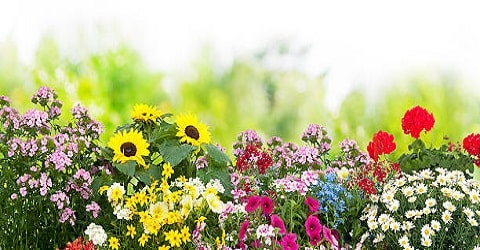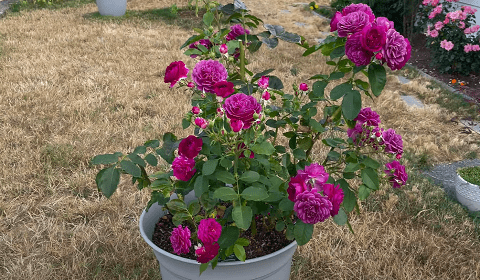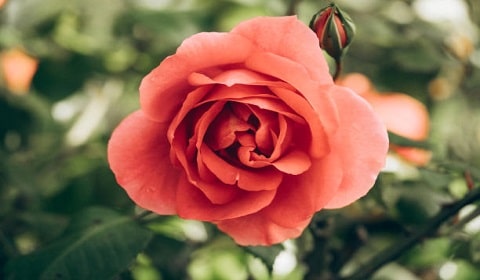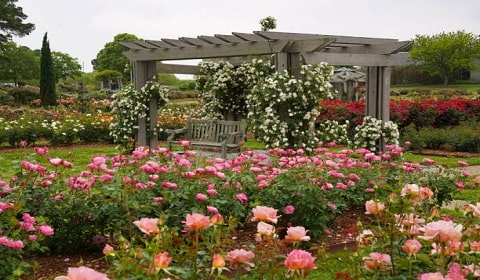Start a flower garden and watch as vibrant blooms dance in the breeze, painting your outdoor space with nature’s palette. Delve into the world of gardening, where each seed planted is a promise of beauty and joy. Embrace the therapeutic rhythm of tending to delicate petals, nurturing them from seedling to full blossom.
Create a sanctuary of fragrant blossoms, a haven for bees and butterflies alike. With careful planning and tender care, your garden will bloom into a tapestry of colors, a testament to the nurturing bond between humans and nature. Let the journey begin, as you start your own floral oasis.
Start A Flower Garden
Flower gardening can be a rewarding and therapeutic hobby, allowing you to create beautiful outdoor spaces while connecting with nature. Whether you have a spacious backyard or a small balcony, starting a flower garden is easier than you might think.
In this comprehensive guide, we’ll walk you through the seven essential steps to help beginners kickstart their flower gardening journey.
Read More: 14 Best Rose Gardening Ideas
Table of Contents
1. Choose a Location for Your Flower Garden
To kick off your flower garden, the initial crucial step is pinpointing the perfect spot. Start by analyzing the specific requirements of your chosen plants—think about their water, sunlight, and soil preferences. For instance, if you’re opting for full-sun perennials, your garden should bask in at least six hours of sunlight daily. Molly E. Williams, a seasoned gardening expert, emphasizes, “Flowers craving full sun won’t thrive in a shady spot, and full-shade plants will wither in intense light.”
Equally vital is assessing your yard’s irrigation. Williams advises against planting in waterlogged areas, warning, “Too much water will lead to rot.” Opt for a spot that drains well, ensuring even drying post-rain. This thoughtful selection guarantees your budding garden flourishes rather than wilts.
Read More: Growing Roses in Pots Just In 10 Steps
2. Test Your Soil
Before sowing seeds, many folks prefer to analyze their soil to grasp its characteristics. This step unveils the pH level and nutrient content, guiding them in selecting necessary enhancements. Barbara Shea, Marketing Director at Tertill, advises, “According to your soil analysis, introducing organic fertilizers or supplements can enrich the soil bed for optimal flower garden development.”
She highlights the importance of customizing nutrient additions based on plant requirements, stating, “It’s crucial to understand that various plants demand distinct nutrients. Researching the specific needs of your plants is essential.” This meticulous approach ensures that plants receive tailored care, fostering healthier growth and vibrant blooms.
3. Know Your USDA Growing Zone
Your USDA growing zone is crucial for selecting the right plants for your yard. Venturing beyond your zone risks plants struggling with your local climate’s extremes, explains Shea. They might not withstand the heat or cold, nor return next year. It’s wise to acquaint yourself with your region’s first and last frost dates. These dates serve as guides for optimal planting times, ensuring your flowers thrive.
Frost poses a threat as it freezes soil moisture, impeding the plant’s ability to absorb vital water and nutrients through its roots. Thus, understanding your zone and frost schedule is pivotal for a flourishing garden, especially when planning your flower garden.
Read More: 20 Balcony Garden Ideas
4. Make Your Flower Bed
If you’re venturing into gardening sans a garden bed, you’ve got two routes to consider: the in-ground or the raised bed. Crafting an in-ground bed involves clearing out all greenery—grass, weeds, the whole shebang—before tilling the soil. “It’s labor-intensive initially, but it pays off in the long haul,” notes Williams.
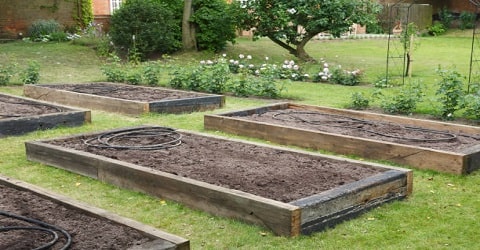
On the flip side, raised beds are often good to go straight out of the gate (unless you’re embarking on a DIY project). Just fill ’em up with the right soil mix, and you’re ready to start planting your green babies.
5. Choose Your Flowers
Choosing flowers for your garden is a delightful yet daunting task, with endless possibilities stretching before you. To ease the decision-making process, it’s crucial to define your garden’s purpose. Do you envision a cutting garden, brimming with blooms for bouquets? Perhaps a low-maintenance sanctuary with native plants? Or maybe you crave a haven for pollinators like butterflies and bees. Understanding your garden’s mission helps streamline flower selection.
Jim Putnam, the insightful mind behind HortTube and a distinguished expert from the Southern Living Plant Collection, advises considering various factors. Your USDA zone, sunlight exposure, soil quality, pest presence, and maintenance preferences all play pivotal roles.
These considerations ensure your garden flourishes harmoniously, tailored to your vision and environmental conditions. So, while the sky may be the limit, thoughtful planning grounded in practicality ensures your garden blooms with beauty and vitality.
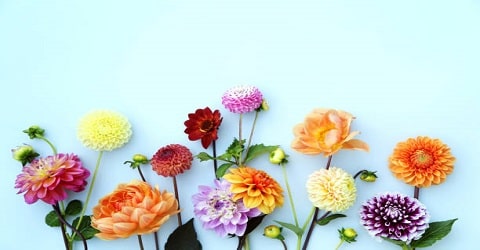
6. How to Design Your Flower Garden
With your location set, your flower bed established, and your blossoms selected, it’s now the thrilling phase—crafting your garden. Your flower bed, the centerpiece of your yard, should delight your eyes daily. Opt for curved lines over harsh edges; they effortlessly guide the gaze throughout the area.
Williams suggests, “Flowers and shrubs can cleverly conceal unsightly objects in your yard, such as electrical boxes, HVAC units, or trash cans.” It’s not just about beauty; it’s about smart design too. Embrace the process, let your creativity bloom, and transform your garden into a captivating sanctuary.
Read More: 30 Best Small Garden Design Ideas
6.1. Choose a Color Scheme
When planning your garden’s color scheme, it’s wise to keep it simple yet impactful. Choose two to three main colors to center your design around, along with a selection of complementary flowers. As gardening expert Shea wisely advises, moderation is key. Too many varieties or hues can create visual chaos, akin to a jumbled outfit.
By limiting your palette, you create cohesion and elevate the garden’s aesthetic to a more polished, professional level. So, take a thoughtful approach, allowing your chosen colors and flowers to harmonize and make a lasting impression on anyone who strolls through your garden oasis.
6.2. Cluster Flowers in Odd Numbers
For a more organic vibe in your garden, try clustering blooms in odd numbers. Planting flower varieties in groups of threes or fives creates a charmingly unmanicured aesthetic. As they grow, the beauty of these clusters will flourish, adding a delightful touch of natural elegance to your outdoor space.
6.3. Mix Perennials and Annuals
Enhancing your garden’s depth involves skillful blending of various plant varieties, including a flower garden. According to Putnam, intertwining annuals, perennials, and flowering shrubs amplifies the vibrancy of blooms across the seasons. It’s worth considering the growth pace; perennials typically take around three years to reach their full splendor.
Hence, incorporating annuals can fill the gaps in perennial beds effectively. Shea suggests leveraging annuals to infuse vibrant hues into high-traffic spots like walkways, poolsides, or decks, ensuring a summer-long burst of color. This strategic mix, along with a dedicated flower garden, not only enriches the visual appeal of your garden but also ensures a continuous and dynamic display of nature’s beauty throughout the year.
7. Choose Focal Flowers
Consider your garden as you would a floral arrangement, with greenery, focal blooms, and fillers. Focal flowers, akin to symmetrical discs such as roses, serve as centerpieces and are best positioned towards the back or center of your bed. Complement them with spike flowers, like snapdragons, and airy blooms, such as feverfew, strategically planted closer to the front.
These additions act as fillers, enhancing the overall aesthetic and balance of your garden. By curating your garden in this manner, you create a harmonious blend of textures and colors, akin to crafting a captivating floral display, enriching the allure of your outdoor space.
Bottom Line
In conclusion, starting a flower garden may seem daunting at first, but with the right guidance and approach, it can be a rewarding and fulfilling experience for beginners. By following these steps and incorporating the suggested tips and resources, you’ll be well on your way to cultivating a stunning flower garden that brings joy and beauty to your outdoor space.
